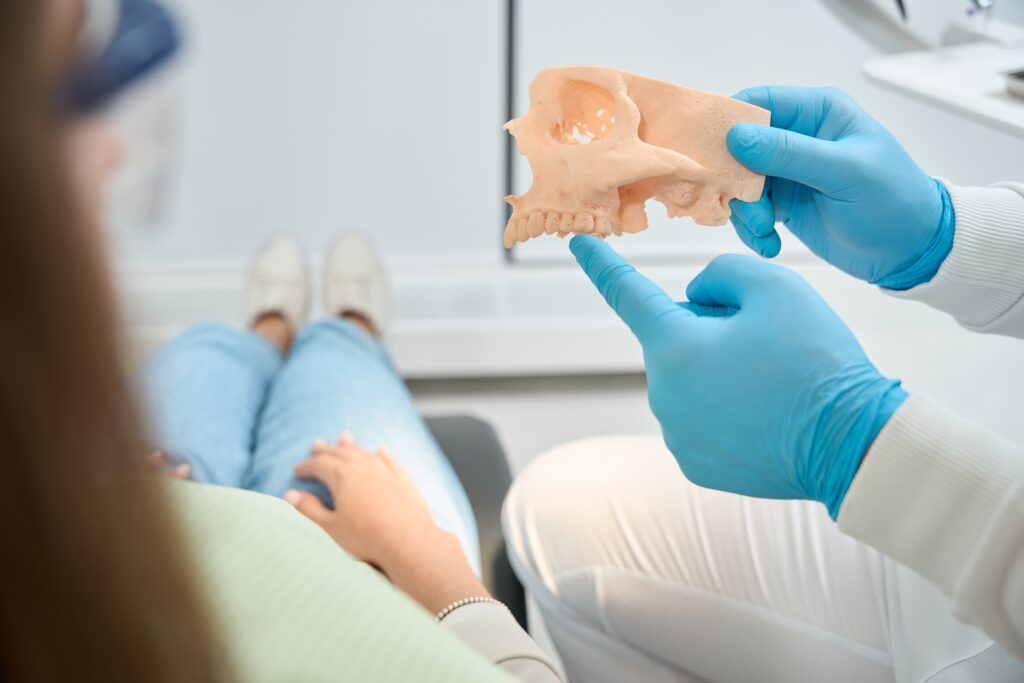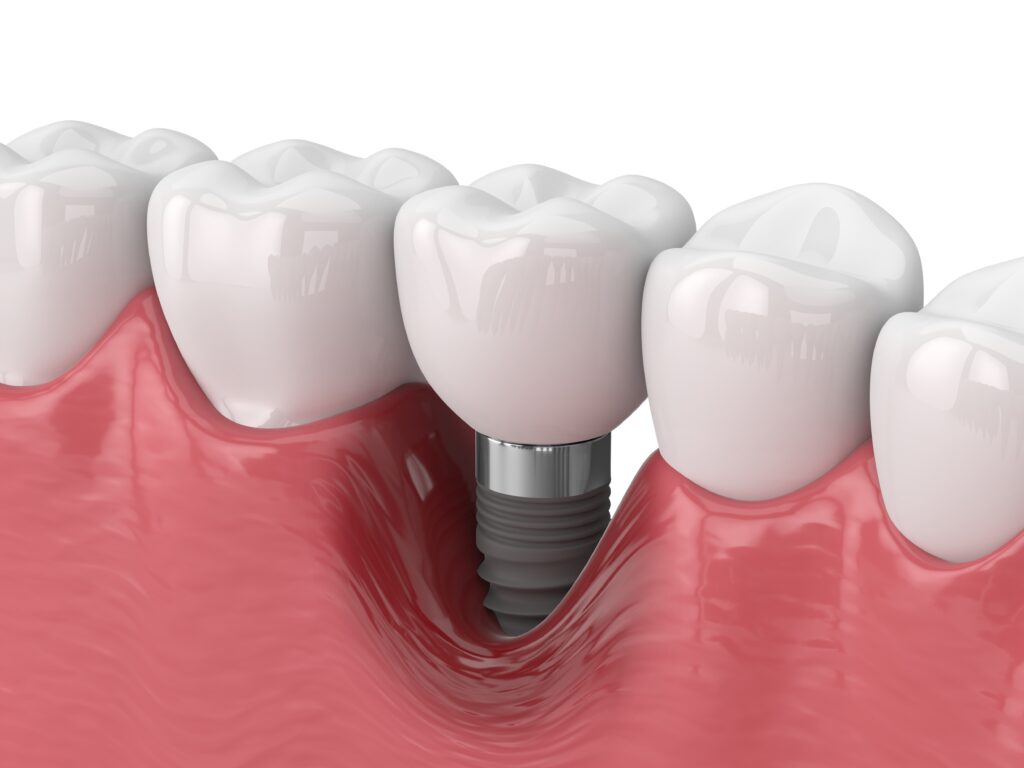
Why Does Bone Loss Matter for Implants?
There are two types of bone loss: osteoporosis and neoplasia. With osteoporosis, the bones become thin and weak, and may eventually break. Neoplasia is abnormal cell growth in the body that can lead to cancer.
People can experience either type of bone loss at any age, but it’s more common in older people. The main cause of osteoporosis is age-related decreases in bone mass and density. Bone loss also can occur as a result of diseases like cancer, rheumatoid arthritis, lupus, or multiple sclerosis.
Dental implants are a popular treatment for replacing missing teeth. Dental implants are made from titanium, and the oral surgeon inserts them into the jawbone to provide support for teeth that have fallen out or been removed because of decay or other problems.
What Are Dental Implants?
Dental implants are a type of medical prosthesis designed to replace missing natural teeth. Implants provide a secure and permanent solution for oral health and smile restoration. The process begins with an oral surgeon placing the implant, which is typically made of titanium or other similar materials, directly into the jawbone to serve as an artificial root for the replacement tooth. Over time, the implant fuses with the human bone and becomes a part of it, providing stability and strength.
After placing the implant, the surgeon attaches an abutment to hold the false tooth in place. The new tooth is created out of porcelain or ceramic material that looks and functions like a natural tooth.
The success rate of dental implants depends on several factors: overall health, lifestyle habits (e.g., smoking), implant placement technique, individual healing ability, and proper maintenance after surgery. With proper care and attention by both patient and dentist, dental implants can last a lifetime!
Those affected by bone loss due to gum disease or other conditions may have alternative types of treatment options such as bone grafts or bone regeneration. These therapies help restore lost bone tissue prior to implant placement. However, anyone considering dental implants should always consult with their dentist or periodontist first to determine which treatment plan would be best for them given their specific condition/needs.

Causes of Bone Loss
Periodontal Disease
Periodontal disease, also known as gum disease, is a major cause of bone loss. Periodontal diseases are infections that affect the structures around your teeth, including the gums and jawbone. These conditions can arise due to poor oral hygiene habits, uncontrolled diabetes or other medical conditions, smoking, genetic predisposition, or certain medications. If left untreated, periodontal diseases can lead to significant damage to the tooth root and surrounding bone structure.
Peri-implant diseases are a type of periodontal disease affecting dental implants and their surrounding tissue. These diseases occur when bacteria accumulate around an implanted tooth root or its supporting structures like abutments and crowns. This leads to inflammation, which can, over time, damage the gums and the jawbone supporting the implant.
To prevent further bone loss in cases of periodontal disease or peri-implant diseases, patients should practice good oral hygiene habits such as brushing twice daily with a soft-bristled brush and flossing once a day. Additionally, regular visits to a dentist or periodontist for checkups are key in diagnosing these conditions early to treat them quickly before any more serious damage takes place.
Tooth Loss
Tooth loss is another major cause of bone loss in the oral cavity. Factors such as periodontal disease, tooth decay, traumatic injury, or even congenital defects can cause bone loss. When a real tooth is lost, adjacent teeth may shift and loosen due to lack of support, leading to further bone deterioration in the area. Additionally, without a real tooth in place, nothing will stimulate the jawbone, which can lead to further bone loss over time. To prevent further bone loss from tooth loss, patients should seek treatment as soon as possible with either dental implants or other methods to replace missing teeth. Dental implants effectively replace natural teeth because they integrate with the jawbone and provide stability and strength similar to that of a real tooth.
Trauma or Injury
Trauma or injury can also cause bone loss in the oral cavity. Clinical studies have shown that fractured teeth or teeth dislodged due to trauma can lead to significant bone loss in the area over time. The severity of the bone loss depends on several factors such as the individual patient’s healing time, overall dental health prior to injury, and type of trauma. When severe damage has occurred, the patient may need to consult an orthopedic surgeon to prevent further complications.
In addition to traumatic injuries, periodontal diseases can also worsen due to trauma or injury in the oral cavity. Injury sustained from a blow or accident can cause periodontal tissue inflammation and increase susceptibility to bacterial infection, which can cause further deterioration of the surrounding bone tissue. Therefore, patients who have experienced any kind of trauma in the mouth should seek treatment from their dentist or periodontist as soon as possible to prevent further damage from taking place.
Natural Aging Process
Naturally aging can also cause bone loss in the oral cavity. As you age, your jawbone begins to naturally thin out and deteriorate over time due to a decrease in collagen production and other factors. This can lead to periodontal diseases or peri-implant diseases easily developing, and it can decrease the success rate of dental implant surgery. To mitigate this, older patients should seek regular checkups with their dental professionals. Through regular checkups, dentists and periodontists can monitor any changes in the patient’s bone density and implement preventive measures such as implant treatment or other therapies accordingly. Additionally, if patients have already experienced some bone loss due to natural aging, they still have options available such as mini implants, bone grafts, and sinus lifts that can improve the stability of the dental implants and increase their chances for success.

Treatment Options for Bone Loss
Tooth Extractions
For patients who have experienced bone loss due to tooth extraction, implant dentistry is typically the best option for restoring the area. During an implant procedure, the oral surgeon places a titanium post into the jawbone where the missing tooth used to be. This post acts as an anchor for a prosthetic tooth, which can be made of porcelain or ceramic depending on the patient’s preference. Once the surgeon places the post in the jawbone with sufficient time for it to integrate with surrounding tissue, the surgeon can then attach a crown (or false tooth) onto the post. This process restores functionality and also prevents further bone deterioration from occurring in the area due to lack of support from a real tooth. After implant placement, patients should follow their dentist’s instructions regarding aftercare to prevent infection or other complications.
Bone Grafting
When extensive bone loss has occurred due to trauma or periodontal disease, the surgeon may not be able to place dental implants instead of natural teeth without the patient first undergoing bone grafting. In this procedure, to create a foundation for future dental implants, the surgeon will graft healthy bone material from another part of your body (typically your chin or hip) onto areas in your jawbone that have experienced significant bone loss. Patients should understand that this process takes time and may require several appointments before a successful placement of dental implants.
Sinus Lift Surgery
If the upper jawbone tissue has significantly atrophied due to missing molars or absent teeth, the patient may need sinus lift surgery prior to implant placement. During this procedure, the oral surgeon will raise the sinus membrane and place new bone material underneath to increase thickness and stability of upper jawbone tissue. This surgeon must perform this procedure before a successful implant placement. Although this treatment requires more recovery time than other techniques such as traditional bone grafting procedures, it is often necessary for achieving successful implant placement with long-term results in cases with severe bone loss over time due to missing teeth.
Zygomatic Implants
Zygomatic implants are a gold standard in dental treatment for patients who have experienced severe bone loss due to missing teeth. This type of implant procedure involves placing titanium posts in the zygoma, or cheekbone, of the patient’s facial structure. The oral surgeon then attaches the posts to the jawbone with a special connecting bridge, which anchor the prosthetic teeth. This method is ideal for patients who lack sufficient bone mass in their jawbone to support traditional dental implants due to age or disease. Zygomatic implants provide more stability and longer-term results than other types of bone grafts used for restoring missing teeth in severe cases of bone loss.

Risk Factors and Complications of Bone Loss and Dental Implants
When considering dental implants for patients with bone loss, patients should consider several risk factors and potential complications. For example, the quality of a patient’s bone can vary significantly between individuals depending on the severity of their condition. Poor quality or the amount of jawbone can increase the risk for failed implantation or delayed implant failure. In addition, certain surgical procedures used in restorative dentistry such as sinus lifts or zygomatic implants may require longer healing times and may involve more discomfort than traditional implants. The patient may also need cosmetic dentistry after implant placement to achieve optimal aesthetic results. Lastly, with the risk of infection after any surgical procedure, patients must follow post-operative instructions closely to prevent any further complications.